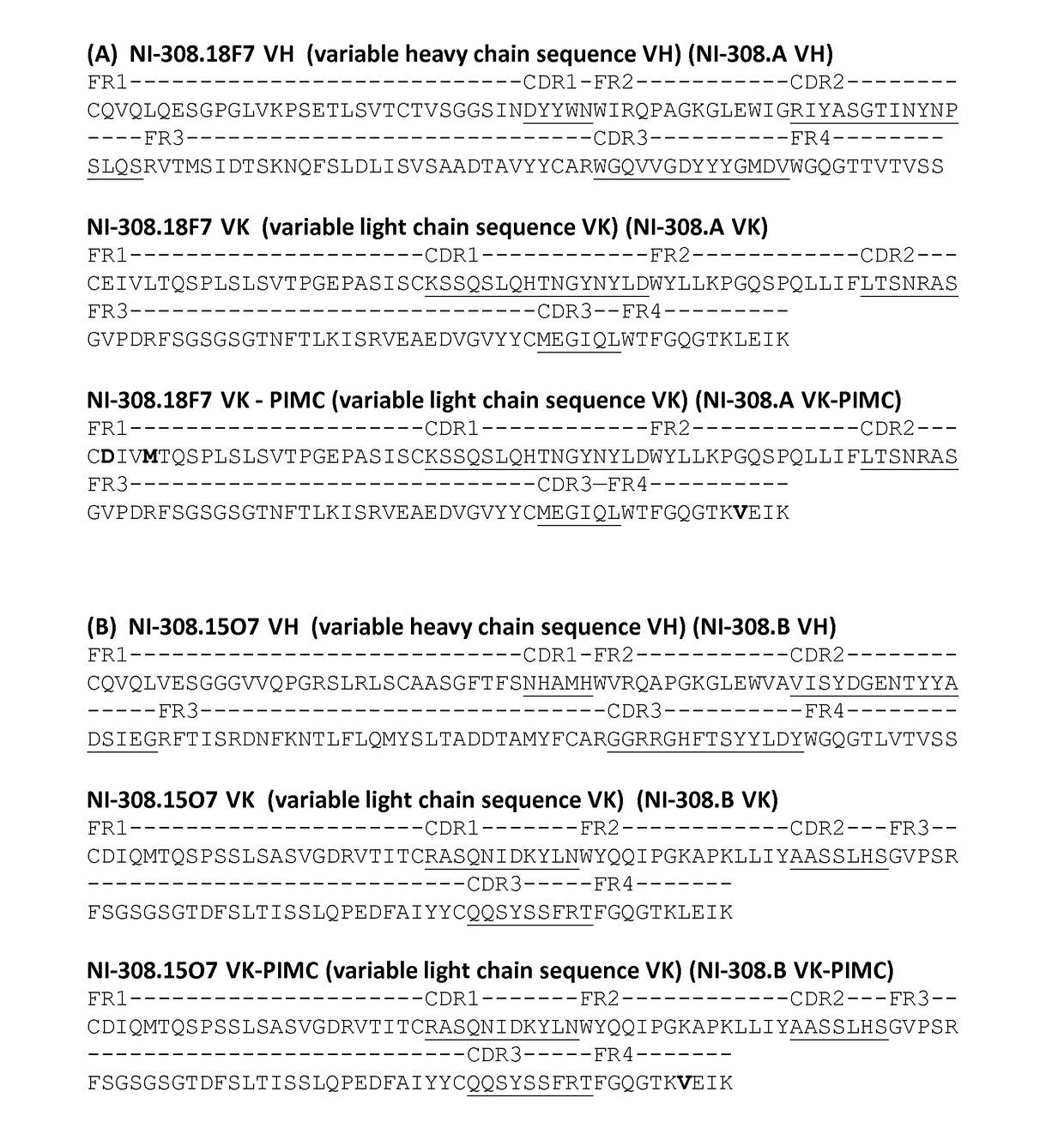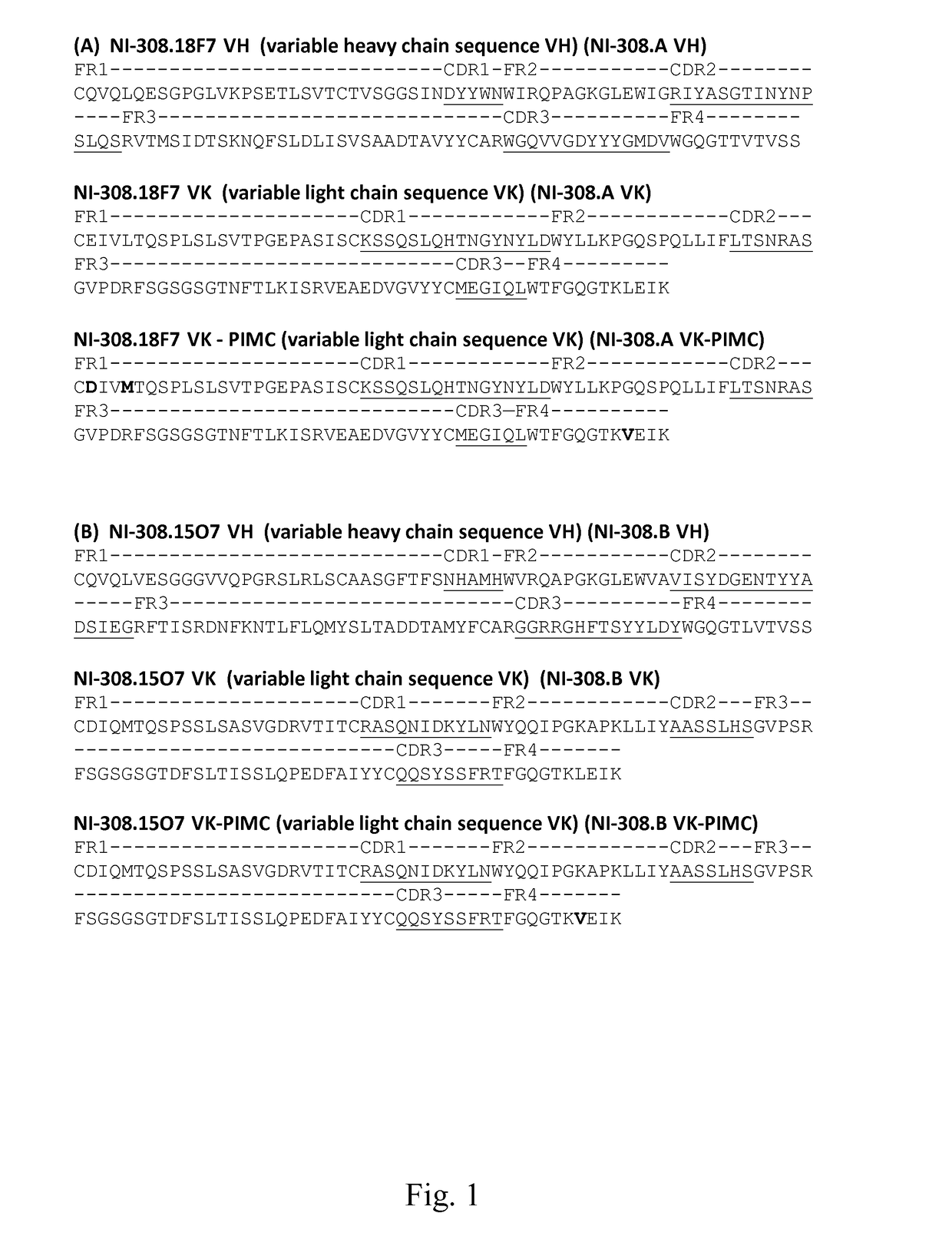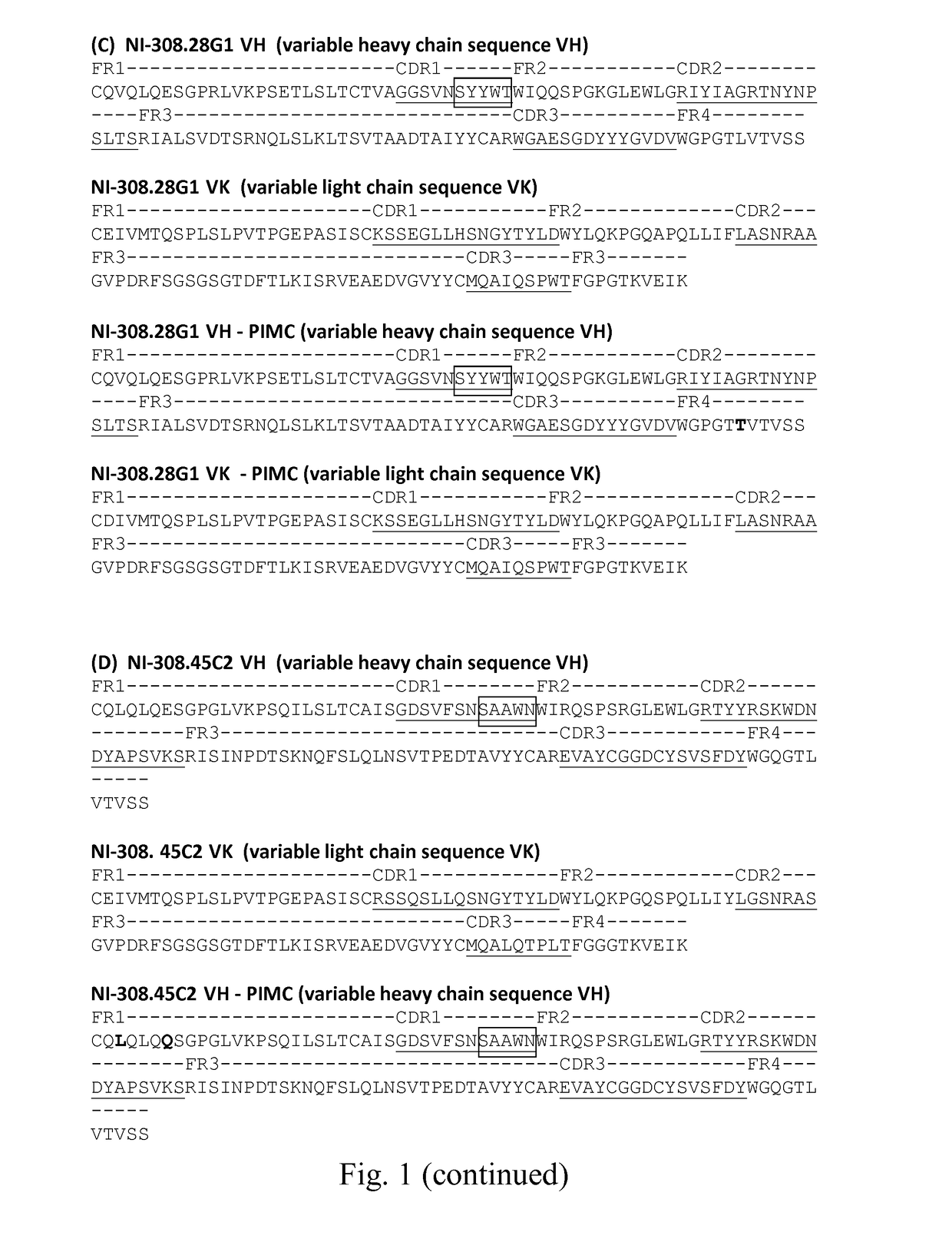Human-derived Anti-dipeptide repeats (DPRS) antibody
a technology of anti-dipeptide repeats and human-derived antibodies, which is applied in the field of human-derived anti-dipeptide repeats (dprs) antibodies, can solve the problems of no evidence of effective treatmen
- Summary
- Abstract
- Description
- Claims
- Application Information
AI Technical Summary
Benefits of technology
Problems solved by technology
Method used
Image
Examples
example 1
and Identification of Anti-Dipeptide Repeat (DPR) Protein Antibodies
[0378]Human-derived antibodies targeting dipeptide repeat (DPR) proteins, fragments thereof, C9ORF72-DPRs and / or fragments thereof were identified utilizing the method described in the international application WO 2008 / 081008 the disclosure content of which is incorporated herein by reference, with modifications. In particular, dipeptide repeat proteins were synthesized and purified by Schafer-N(Copenhagen, Denmark): GA15: H—CHHHHHH(GA)15-OH; GP15: H—C(GP)15-OH; GR15: H—C(GR)15-OH; (PA)15: H—C(PA)15-OH; (PR)15: H—C(PR)15-OH. Dipeptide repeat proteins were then conjugated via a bifunctional linker (SMCC) to bovine serum albumin (BSA). Subsequently, direct ELISA was performed using 96-well microplates (Corning) coated with either non-conjugated or BSA-conjugated dipeptide repeat proteins or with BSA (Sigma-Aldrich, Buchs, Switzerland) at a concentration of 5 μg / ml in coating buffer (15 mM Na2CO3, 35 mM NaHCO3, pH 9.42...
example 2
tion of Antibody Sequence
[0379]The amino acid sequences of the variable regions of the above identified anti-DPR antibodies were determined on the basis of their mRNA sequences, see FIG. 1A-J. In brief, living B cells of selected non-immortalized memory B cell cultures were harvested. Subsequently, the mRNAs from cells producing selected anti-DPR antibodies were extracted and converted in cDNA, and the sequences encoding the antibody's variable regions were amplified by PCR, cloned into plasmid vectors and sequenced. In brief, a combination of primers representing all sequence families of the human immunoglobulin germline repertoire was used for the amplifications of leader peptides, V-segments and J-segments. The first round of amplification was performed using leader peptide-specific primers in 5′-end and constant region-specific primers in 3′-end (Smith et al., Nat Protoc. 4 (2009), 372-384). For heavy chains and kappa light chains, the second round of amplification was performed...
example 4
ffinity to BSA-Coupled DPR Peptides
[0384]To determine the binding specificity and the half maximal effective concentration (EC50) of recombinant human-derived C9orf72 antibodies NI-308.15O7, NI-308.28G1, NI-308.45C2, NI-308.18F7, NI-308.24E11, NI-308.5G2, NI-308.46E9, NI-308.6B11, NI-308.46F8, NI-308.4M1, NI-308.12A3 and NI-308.16C10 for C9orf72 dipeptide repeat proteins coupled to bovine serum albumin (BSA) an ELISA EC50 analysis was performed. In brief, dipeptide repeat proteins were synthesized and purified by Schafer-N(Copenhagen, Denmark): (GA)15: H—CHHHHHH(GA)15-OH; (GP)15: H—C(GP)15-OH; (GR)15: H—C(GR)15-OH; (PA)15: H—C(PA)15-OH; (PR)15: H—C(PR)15-OH. DPR protein peptides were then conjugated via a bifunctional linker (SMCC) to bovine serum albumin (BSA). 96-well microplates (Corning Incorporated, Corning, USA) were coated with BSA-coupled or -uncoupled dipeptide repeat protein peptides at a concentration of either 5 μg / ml or 20 μg / ml in coating buffer (15 mM Na2CO3, 35 mM Na...
PUM
| Property | Measurement | Unit |
|---|---|---|
| pH | aaaaa | aaaaa |
| concentration | aaaaa | aaaaa |
| concentration | aaaaa | aaaaa |
Abstract
Description
Claims
Application Information
 Login to View More
Login to View More - R&D
- Intellectual Property
- Life Sciences
- Materials
- Tech Scout
- Unparalleled Data Quality
- Higher Quality Content
- 60% Fewer Hallucinations
Browse by: Latest US Patents, China's latest patents, Technical Efficacy Thesaurus, Application Domain, Technology Topic, Popular Technical Reports.
© 2025 PatSnap. All rights reserved.Legal|Privacy policy|Modern Slavery Act Transparency Statement|Sitemap|About US| Contact US: help@patsnap.com



